ÃÂI deny that there has been such a German-Jewish dialogue in any genuine sense whatsoever, i.e. as a historical phenomenon. It takes two to have a dialogue, who listen to each other, who are prepared to perceive the other as what he is and represents and to respond to him. Nothing can be more misleading than to apply such a concept to the discussion between Germans and Jews during the last 200 years.ÃÂGershom ScholemDiscuss this in relation to the texts and issues that you have studiedNatalie Conn3024022The age of emancipation in Germany began in 1871 with the famous treatise by the Prussian state councilor Christian Wilhelm Dohm. It ended only with the constitution of the German Reich of 1871, which definitively declared the equal status of the Jews of Germany before the law. The age of emancipation simultaneously marked the epoch of the rise of bourgeois society in Germany, and both processes were interwoven.
Many German-Jewish theorists claim there was a Judeo-German Symbiosis, which is the illusory interaction or exchange between German and Jewish cultures once the Jews of Germany were emancipated. Underneath this image of a symbiosis, there was another much darker image surfacing on top of it. This was the picture of a growing tension between the Jews and the Germans and furthermore, a failed relationship that would merely end up in devastating conflict. Gershom Scholem, in his writings emphasised the latter idea of an illusionary symbiosis. This is portrayed very powerful in the essay quote. Scholem discusses in great depth the ÃÂGerman-Jewish symbiosisÃÂ and strongly concluded it was then, less a social reality in the living-together of Jews and Non-Jews than it was a cultural phenomenon within the Jewish group itself. It must also be emphasised that right from the beginning that he portrays his views very strongly and does not accept that there may have been individual German-Jewish friendships. As a result of this, his ideas have become questionable and debatable.
As a result of emancipation, the occupational limitations on Jews were eliminated but the change in Jewish vocational patterns ran an entirely different course than the one that the emancipators had pictured. They had aimed for a steady adaptation to the general occupational distribution; ÃÂbut it soon turned out, in view of growing economic liberalism, that this notion was as antiquated as it was unrealistic.ÃÂ (Jewish life in Germany pp 10) The majority of Jews stuck to trading, they knew the methods of trade and promotion, had connections beyond their home regions and knew the wares in various branches of trade. It strikes one again and again in the memoirs of so many German Jews such as Bernhard Kahn (Jewish life in Germany pp 279) and Wolfgang Roth (Jewish life In Germany pp 315) how quickly new economics needs and opportunities were recognized and put into use, and how ready the entrepreneur was to constantly modernize and reorient his business. This is reflected by statistics that illustrate between 50-60 percent of the Jewish salaried workers were employed in trade and business, a domain that engaged only 10% of the German population as a whole. Linked to this fact is the fact that among Jews the proportion of the self-employed was always much larger than that of those who worked for others. The Majority of German Jews boasted henceforth of belonging to the middle classes, even, in the case of a privileged elite, to the upper level of the bourgeoisie. Furthermore, in 1910, Jews in Germany represented approximately 15% of lawyers, 6% of doctors and 8% of writers and journalists, whereas ÃÂthey constituted approximately 1.2% of the population in GermanyÃÂ(Jewish life in Germany pp 5). The establishment of many shopping departments and banks were predominantly founded and owned by Jews. Once this overwhelming Jewish success was evident in Germany, the image of the German ÃÂparasiteÃÂ began to haunt modern anti-Semitic literature. This can be seen in writings by Germans such as Julius Streicher who by 1937 published a weekly newspaper called ÃÂDer SturmerÃÂ which solely rubbished the success of Jews. At the end of the 19th centaury, the word parasitism was already widely used to describe the economic success of ÃÂThe JewsÃÂ.
The relationship between the Jews and the larger society cannot be described in simple terms. It has been emphasised by the latter statistics of the economic situation of Jews living in Germany, that as a majority they were very successful, however it spears in one light from the Jewish perspective, and in another from that of the JewsÃÂ fellow citizens, and in an entirely different light to todayÃÂs observer, who can never ignore the terrible end of this relationship. In rural areas in Germany, where the Jewish and the Christian populations were religiously more conservative, both groups lived in social separation, but they still kept up neighborly ties. The relationships were much different than that in cities, where it was more a matter of individual acquaintances between members of the same social stratum. Here it sometimes happened that Jews-above all, members of the upper class, academics or artists, socialized only with Christians. On the other hand, there is much biographical evidence from the life of the Jewish bourgeoisie to show thatÃÂs its members associated predominantly with one another and remained separate from their Christians counterparts ÃÂas though by a glass wallÃÂ. (The Jewish German economic elite pp 24) Such conditions could also be observed in the middle class Jewish neighborhoods of Berlin-West. ÃÂIn his work, every Jew associated with non-Jews; in private life association with fellow believers was the ruleÃÂ. (The Jewish German economic elites, pp 24)The character and quality of Christian-Jewish social relations were more important than their extent. But one must differentiate between personal friendships based on individual choice and socially unavoidable relations such as those with neighbors, school friends and professional colleagues. In these relations, it was less the individual Jew than the German majority who set the tone, and it was often hostile. Writers such as Arthur Schnitzler report local excesses against Jews, professional obstacles, or conflict at work, but place greater stress on the harmonious relations between Jews in their environment that existed at the very same time. This was clearly conveyed in his play ÃÂProfessor BernhardiÃÂ. Underneath the professional conflicts there were many civil relations and furthermore, friendships amongst the doctors and staff that worked with Dr. Bernhardi. An example of this was the friendship between Dr. Bernhardi and Dr. Pflugfelder. Pflugfelder was a non-Jewish doctor who supported Bernhardi during his professional conflicts. However for the majority of positive German-Jewish social relations, Scholem explains that, if by some small chance there were good relations on both sides, it often depicted in a way that makes them appear as the exception and definitely not the majority.
In the eyes of Gershom Scholem, the relationship between the Germans and the Jews was merely an ÃÂalliance built on deceptionÃÂ(The Jews and Germany, pp 4). Scholem described the emancipation of the Jews as a process by which Jews in Germany could be accepted as citizens, but remained excluded from a nationality. Furthermore he explains that, assimilation had dissolved the Jewish nation and confessionalised its members within German society, but Germaninity never replaced the former nationality. Whether consciously or not, assimilated Jews inhabited a no-mans land. Gershom Scholem furthermore denies the very existence of a Judeo-German dialogue, which in his view ÃÂdied at its very start and never took place since the Jews were always perceived as foreign elements in the German nation and in spite of their desire for assimilation (like his farther), at no time were successful in integrating with it.ÃÂ (The Jews and Germany, pp 15) He perceived that once the notion of an identifiable ÃÂJewish wholeÃÂ had been abandoned, this being the only possible premise for a dialogue, the encounter of the Jews with German culture, in fact, became a form of self denial and monologue: ÃÂI deny that there has ever been such as German-Jewish dialogue in any genuine sense whatsoever, it takes 2 to have a dialogue, who listen to each other, who are prepared to perceive the other as what he is and represents, and to respond to him. Nothing can be more misleading than to apply such as concept to the discussions between Germans and Jews during the last 200 yearsÃÂ. (The Jews and Germany, pp 6)Scholem and his forerunners such as Heinrich Mann were convinced that the Jews only talked to themselves even when they though that they were talking to the Germans. The idea of a Judeo-German symbiosis was completely denied by them.
It is evident that Scholem and his forerunners have completely disregarded the latter facts that Jews and Germans individually did had civil and friendly relations such as Arthur Schnitzler who had many German friends and counterparts. However, if one looks at the bigger picture, Scholem is very precise when saying the symbiosis between ÃÂThe JewsÃÂ and ÃÂThe GermansÃÂ was an illusion. The precarious and fundamentally illusory nature of the emancipation was bitterly recognized by the writer Arnold Zwig, who from 1933 was drawing up his balance sheet of German Judaism: ÃÂIt is certain that henceforth there will be no new place for Jews in the future of German cultureÃÂ. (Jewish life in Germany, pp 7) For Zwig, symbiosis became a cultural phenomenon purely within the Jewish community, unconnected with any social life in common between the two groups that were supposed to comprise it.
Leo Baeck and Martin Buber also no doubt mark the origin of the myth of a Judeo-German symbiosis but they also show that it was a reality in their eyes, the perceptions, of a very large section of the Jewish population. The idea of a Judeo-German dialogue therefore was not invented a posteriori by historians, but actually reflected a phenomenon that really existed; namely the Jewish illusion of belonging to Germany. Deeply rooted, this sentiment had a positive effect on the state of mind, the modes of behavior, the expectations of German Judaism up to its destruction and the emergence of Hitler and the Nazis.
An overwhelming majority of Jews for instance intellectuals and writers such as Isaac Deutscher, Arthur Schnitzler and Otto Bauer felt profoundly German and regarded their work as belonging to German culture.
A misapprehension, in Gershom Scholem's view because, they always were excluded from that world which, after having persecuted them for centuries, was momentarily to generate the illusory dream of their possible acceptance (more precisely their assimilation) and ended by expelling and exterminating them. Once again it must be emphasised that Scholem's view on a deceptive Judeo-German symbiosis should be approached by realizing that there were individual cultural relations between the two however as an ÃÂentireÃÂ group these relations never existed.
Without wishing to enlarge this semantic analysis, it can be said that the history of Judeo-German relations as ÃÂtwo whole groups of peopleÃÂ appears to oscillate between two poles: What Jews tried to paint as a creative, fruitful symbiosis often seemed to the Germans (particularly a substantial section of the intelligentsia) as the intrusion of a foreign element of dangerous ÃÂparasite- into the core of their nation and culture.
It is important to note that Scholem emphasises that this symbiosis was never there at all, but according to writers such as Hannah Arendt; there was ÃÂsome kind of neutral zoneÃÂ (Jewish Life in Germany, pp 15) at the start of the 19th century. Here took place the encounter between two different categories of outsiders: The Jews and the proto-intellectuals of modern Germany. In certain respects, the salons of Henriette Herz and Rahel Levin Varnhagen represented the most significant among the rare instances of this Judeo-German osmosis. Recognized and enjoying a de facto legitimacy as places of social interaction, despite their non-institutional character, they were frequented by almost all the important German cultural figures of the period such as Goethe, Schleiermacher and Adalber von Chamisso. In effect, the salons constituted only a brief interlude, but they marked a fundamental stage in the process of assimilation and it is symptomatic of their failure that their members, Rachel Levin as much as Henriette Herz, tried to escape their Judeity through conversion.
Christopher Browning who wrote a very interesting paper called ÃÂNazi Policy, Jewish Workers, German KillersÃÂ makes a good point by explaining that economic considerations and interactions were taken seriously by Germans but only within limits and not as a challenge to the parameters set by political and ideological factors. Because Jewish success emerged so soon after emancipation it almost became a threat straight away and therefore may lead to the ideas of writers such as Scholem, which is that The Jewish-German symbiosis never existed.
Hans Mayer explains that the reason Jewish-German relations never existed is because ÃÂwithout knowing it, in any case without wanting to know it, they lived in a Judeo-German ghettoÃÂ. (The Jews In Germany, pp 61) The same view is affirmed in a letter by Franz Rosenzweig who in 1917, wrote to his parents as follows; ÃÂWhen you wish to feel German, your choice is limited to those Germans who permit you to exist. These are (1) Germans in the same position as yourself; that is, other Jews, (2) some déclassé individuals and bohemians, (3) some liberally inclined and well-off people, (4) Die Verjudeten, (5) your bosom friends. (The Jews and Germany, pp 176-177) This is a very interesting explanation as to why the symbiosis never existed however it has been recognized as one of the many reasons of its failure.
Similarly, a rather strange orthodox response to the failure of a symbiosis was brought forward however was highly unpopular and by the majority of writers disregarded. Some orthodox writers explained that Jewish success and assimilation saw the emergence of the ÃÂNon Jewish JewÃÂ which has been correctly defined by Freud as a Jew who ÃÂdoes not understand the holy tongue, who is estranged from the religion of his fathers, who cannot participate in the nationalist ideology and yet who has never denied that he belongs to his people, who is conscious of his Jewish distinctiveness and does not want it changedÃÂ. (The Jewish question, pp 3) As a result of this assimilation and lack of faith to oneÃÂs religion, they were punished economically and socially. Once again it must be emphasised that although this is a justification it is a highly unpopular reason and very rarely discussed, however it is interesting to view responses from all Jews such as orthodox and assimilated.
The clearest evaluation of the failure and impossibility of a Judeo-German Symbiosis was made by Franz Rosenzweig who in a few words summarized a century of Judeity in German culture. ÃÂIt is impossible for us to remain strangers, detached from the intellectual and spiritual life of those peoples who permit us to share in it, detached also in out innermost being from what we are trying to contribute, by way of compensation for having been permitted to take part in it. What we receive, as Jews we have no right to receive; what we accomplish, we ought not to as Jews. And yet, unity of spirit compels us to establish what are of necessity specific relations between our Judaism and that which we receive or achieve; and even if our actions were submitted to the judgment of the peoples, even if they felt obliged to tell us whether they accepted or rejected them, their jurisdiction would extend no further, we are the sole judges of any attempt to understand the world on the basis of Judaism itselfÃÂ. (The Jews and Germany, pp 39) It is evident from Jewish writers such as Rosenzweig and Gershom Scholem that ÃÂthe JewsÃÂ as one people always remained outsiders in the Germanic world. Hence this proves that this Jewish idea of Judeo-German Symbiosis was merely an illusion. However it is just as important to understand that although, as a bigger picture, the symbiosis was never really there at all, there were many German-Jewish relationships, even friendships that didexist. After all, when the Holocaust emerged, many Jewish Germans were saved by righteous, Christian Germans as they allowed them to hide in their houses. This suggests that there must have been, if only a few, German-Jewish bonds and friendships.
Bibliography:*M. Kaplan, ÃÂÃÂmaking of the middle classÃÂ The making of the Jewish Middle classÃÂ, Oxford university press, 1991, pp 1-21*M. Richarz, ÃÂÃÂImperial GermanyÃÂ ÃÂWeimar Republic and National SocialismÃÂ Jewish Life In GermanyÃÂ, Indiana university press, 1991,PP: 1-38 Introduction173-180Henriette Hirch279-301 Bernhard Kahn315-323Wolfgang Roth*W.E Mosse, ÃÂÃÂPersonal relations and social contacts- Intra-JewishÃÂ ÃÂPersonal relations and social contracts- Jew and Gentile in daily lifeÃÂ The German-Jewish Economic Elite- A socio-cultural profileÃÂ, Clarendon Press. Oxford, 1989, pp 93-134 and pp 134-161*G. Scholem, ÃÂÃÂJews and GermansÃÂ ÃÂWith Gershom Scholem; and interviewÃÂ On Jews and Judaism in crisisÃÂ, New York, 1976, pp 71-92, pp 1-47*L. Trotsky, ÃÂÃÂintroductionÃÂ On The Jewish QuestionÃÂ, New York: Pathfinder publishing, 1970, pp 1-10*G. Mosse, ÃÂÃÂJewish response to German cultureÃÂ Jewish emancipationbetween building and respectabilityÃÂ Clarendon Press, 1989, pp 1-16*E. Traverso, ÃÂÃÂEmancipation at an ImpasseÃÂ The Jews In GermanyÃÂ, University of Nebraska press, 1984, pp 3-39
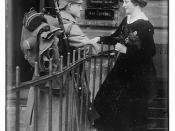
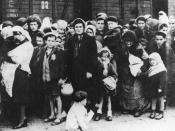
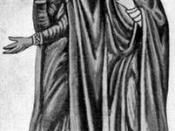

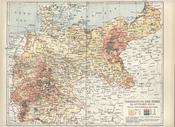
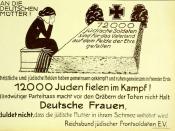
"Nothing can be more misleading than to apply such a concept to the discussion between Germans and Jews during the last 200 years." - Gershom Scholem. Analysis
This paper was well written. Very thoughtful. But I disagree that there was not a Judeo-German symbiosis, or the Germans would never have even passed the law in their constitution of the German Reich of 1871, which definitively declared the equal status of the Jews of Germany before the law. Because the establishment of many shopping departments and banks were predominantly founded and owned by Jews, discrimination was played on both sides of the fence. The Jewish community should have shared in the wealth. Instead, Aryans were paid less, and hired last. Now the Holocaust, from what I gather from history books, Hitler was really high on amphetamine, and he definitely did too much. His army too. Lack of sleep and nourishment will make you crazy. And Meth on top of that makes you feel like a God. Very powerful, and DANGEROUS drug. Many United States Presidents have used amphetamines to be on top of their game so to speak. As a matter of fact, many college students use speed to enhance their performance too! We should all be grateful that Hitler didn't use in moderation, or he would have ruled the world and we would all be speaking German. Thank Goodness Hitler got too high, or there would be no Jews.
0 out of 0 people found this comment useful.